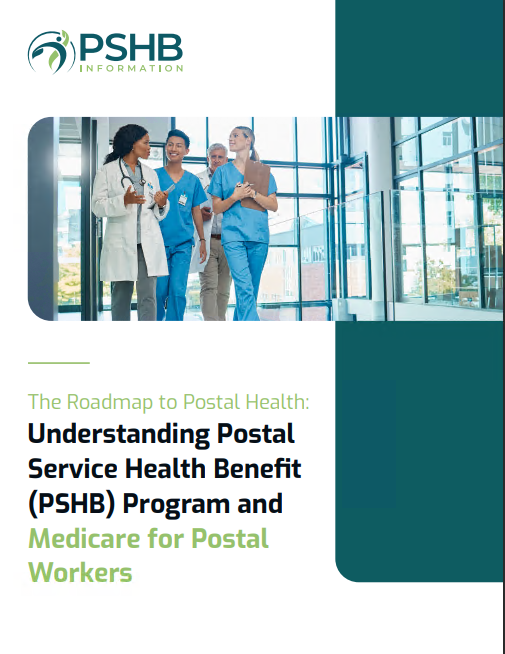Key Takeaways:
-
The Postal Service Health Benefits (PSHB) Program officially replaced the Federal Employees Health Benefits (FEHB) Program for USPS workers and retirees as of January 1, 2025, bringing significant changes to your health coverage.
-
Understanding the PSHB transition and how it impacts your premiums, out-of-pocket costs, and Medicare integration is essential to selecting the right plan for you and your family.
Get Familiar with the PSHB Transition
If you’re a United States Postal Service (USPS) worker or retiree, you’ve likely heard about the shift to the Postal Service Health Benefits (PSHB) Program. This major change took effect on January 1, 2025, transitioning USPS employees and annuitants from the Federal Employees Health Benefits (FEHB) Program to PSHB. With this shift, there are new rules, benefits, and costs to consider, making it crucial to review your options carefully during Open Season or a qualifying life event.
Why the Transition Happened
The PSHB program was created as part of a broader effort to align USPS health benefits with cost-saving measures and improve coverage efficiency. By tailoring plans exclusively for postal workers and retirees, PSHB aims to streamline benefits while addressing unique needs like Medicare integration. However, this transition introduces significant changes you’ll need to evaluate to avoid unexpected costs or coverage gaps.
What’s New with PSHB
Medicare Integration for Retirees
If you’re Medicare-eligible, you’ll need to enroll in Medicare Part B to maintain your PSHB coverage, with a few exceptions. This requirement is a key difference from the previous FEHB system. Pairing Medicare with PSHB can lower your overall healthcare costs, but it also means additional premiums and a commitment to Medicare enrollment timelines.
Premium Adjustments
Under PSHB, premiums are shared between the USPS and enrollees. While the government covers about 70% of the total premium cost, your share depends on the plan you choose. Review your plan’s biweekly or monthly rates carefully to ensure it fits your budget.
Broader Plan Choices
The PSHB program offers a variety of plans tailored to USPS workers and retirees. While the total number of plans may be slightly reduced compared to FEHB, you’ll still find options with varying levels of coverage, including high-deductible health plans (HDHPs), standard options, and plans with extensive supplemental benefits.
How to Choose the Right Plan
Understand Your Healthcare Needs
Think about the type of healthcare you and your family typically use. Do you require frequent specialist visits, ongoing prescription medications, or access to out-of-network providers? Reviewing these factors will help you identify a plan that minimizes your out-of-pocket costs while meeting your needs.
Compare Plan Features
Focus on the following aspects when comparing PSHB plans:
-
Deductibles: In-network deductibles range from $350 to $1,500, depending on the plan. Out-of-network deductibles may be higher, so check these details carefully.
-
Out-of-Pocket Maximums: The maximum in-network out-of-pocket limit is $7,500 for Self Only and $15,000 for Self Plus One or Family plans. These caps help protect you from catastrophic costs.
-
Copayments and Coinsurance: Costs for office visits, urgent care, and emergency services vary. Typical copayments range from $20-$60 for primary or specialist care, while emergency room visits may cost $100-$150.
Consider Medicare Coordination
If you’re already enrolled in Medicare or eligible to enroll, consider plans that integrate well with Medicare. Many PSHB plans offer lower deductibles, waived coinsurance, or prescription drug cost reductions when paired with Medicare Part B.
Key Deadlines to Know
Open Season
The PSHB Open Season runs annually from November 11 to December 13. During this time, you can:
-
Enroll in a new plan.
-
Switch plans if your needs or preferences have changed.
-
Add or remove eligible family members from your coverage.
Changes made during Open Season take effect on January 1 of the following year, so it’s essential to act promptly.
Qualifying Life Events (QLEs)
Outside of Open Season, you can only make changes to your PSHB coverage if you experience a qualifying life event, such as marriage, divorce, birth or adoption of a child, or loss of other health insurance coverage. Be sure to submit changes within 60 days of the event.
Medicare Part B Enrollment Timeline
If you’re required to enroll in Medicare Part B for PSHB, you have specific enrollment periods to consider:
-
Initial Enrollment Period (IEP): A seven-month window around your 65th birthday to sign up without penalties.
-
Special Enrollment Period (SEP): Available if you’re working and covered under an employer plan beyond age 65. You have eight months to enroll after leaving employment or losing coverage.
-
General Enrollment Period (GEP): Runs from January 1 to March 31 annually, with coverage beginning July 1. Late enrollment penalties may apply.
Avoid Common Pitfalls
Missing Open Season Deadlines
Failing to review or update your plan during Open Season can result in being automatically re-enrolled in your current plan, which might not meet your needs. Set reminders to review your options during this period.
Overlooking Medicare Integration
If you’re Medicare-eligible and don’t enroll in Part B, you risk losing PSHB coverage unless you qualify for an exemption. Check your eligibility and costs to ensure compliance.
Ignoring Plan Details
Each PSHB plan comes with its own cost-sharing structure, provider networks, and benefits. Skimming over these details can lead to unexpected expenses or lack of coverage for essential services.
Making the Most of PSHB Benefits
Leverage Preventive Services
Most PSHB plans cover preventive services at 100% when you use in-network providers. These include routine checkups, immunizations, and screenings. Taking advantage of these services can help you stay healthy and detect potential health issues early.
Explore Supplemental Benefits
Many PSHB plans offer supplemental benefits, such as dental, vision, and hearing coverage. While these services might come with additional costs, they can save you money in the long run if you or your family need them regularly.
Stay Informed
Review your plan’s annual brochure for updates on premiums, deductibles, and benefit changes. You’ll receive this document each fall, and it’s your best resource for understanding your plan’s specifics.
Wrapping Up Your PSHB Plan Decision
Navigating the transition to the Postal Service Health Benefits Program doesn’t have to be overwhelming. By understanding the new requirements, exploring plan options, and staying informed about deadlines, you can make confident choices about your healthcare. Remember to assess your healthcare needs, compare plans thoroughly, and take advantage of Medicare integration if applicable. With the right plan, you’ll be well-prepared for a healthy and financially secure future.








